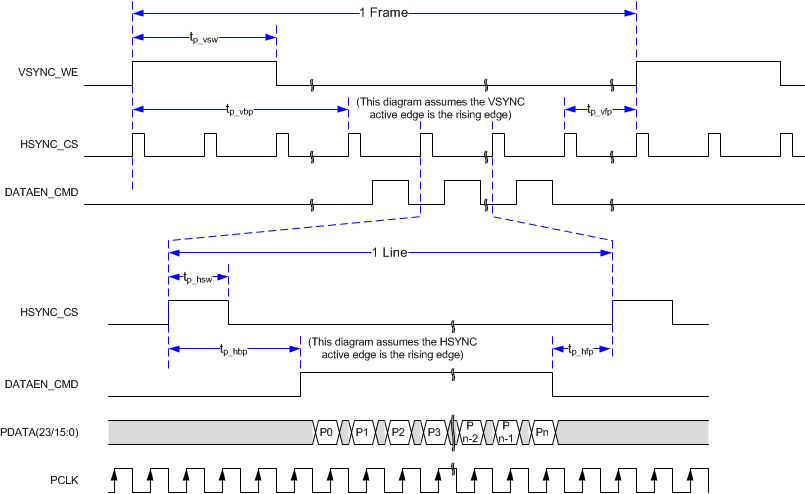DLPS143B July 2018 – October 2020 DLPC3434
PRODUCTION DATA
- 1 Features
- 2 Applications
- 3 Description
- 4 Revision History
- 5 Pin Configuration and Functions
-
6 Specifications
- 6.1 Absolute Maximum Ratings
- 6.2 ESD Ratings
- 6.3 Recommended Operating Conditions
- 6.4 Thermal Information
- 6.5 Power Electrical Characteristics
- 6.6 Pin Electrical Characteristics
- 6.7 Internal Pullup and Pulldown Electrical Characteristics
- 6.8 DMD Sub-LVDS Interface Electrical Characteristics
- 6.9 DMD Low-Speed Interface Electrical Characteristics
- 6.10 System Oscillator Timing Requirements
- 6.11 Power Supply and Reset Timing Requirements
- 6.12 Parallel Interface Frame Timing Requirements
- 6.13 Parallel Interface General Timing Requirements
- 6.14 Flash Interface Timing Requirements
- 6.15 Other Timing Requirements
- 6.16 DMD Sub-LVDS Interface Switching Characteristics
- 6.17 DMD Parking Switching Characteristics
- 6.18 Chipset Component Usage Specification
-
7 Detailed Description
- 7.1 Overview
- 7.2 Functional Block Diagram
- 7.3 Feature Description
- 7.4 Device Functional Modes
- 7.5 Programming
- 8 Application and Implementation
- 9 Power Supply Recommendations
- 10Layout
- 11Device and Documentation Support
- 12Mechanical, Packaging, and Orderable Information
Package Options
Mechanical Data (Package|Pins)
- ZVB|176
Thermal pad, mechanical data (Package|Pins)
6.12 Parallel Interface Frame Timing Requirements
See Section 11.1.2.2 for additional information
| MIN | MAX | UNIT | |||
|---|---|---|---|---|---|
| tp_vsw | Pulse duration – default VSYNC_WE high | 50% reference points | 1 | lines | |
| tp_vbp | Vertical back porch (VBP) – time from the active edge of VSYNC_WE to the active edge of HSYNC_CS for the first active line(1) | 50% reference points | 2 | lines | |
| tp_vfp | Vertical front porch (VFP) – time from the active edge of the HSYNC_CS following the last active line in a frame to the active edge of VSYNC_WE(1) | 50% reference points | 1 | lines | |
| tp_tvb | Total vertical blanking – the sum of VBP and VFP (tp_vbp + tp_vfp) | 50% reference points | See (1) | lines | |
| tp_hsw | Pulse duration – default HSYNC_CS high | 50% reference points | 4 | 128 | PCLKs |
| tp_hbp | Horizontal back porch (HBP) – time from the active edge of HSYNC_CS to the rising edge of DATAEN_CMD | 50% reference points | 4 | PCLKs | |
| tp_hfp | Horizontal front porch (HFP) – time from the falling edge of DATAEN_CMD to the active edge of HSYNC_CS | 50% reference points | 8 | PCLKs | |
(1) The minimum total vertical blanking is defined by the following equation:
tp_tvb(min) = 6 + [8 × Max(1, Source_ALPF / DMD_ALPF)] lines
where:
where:
- SOURCE_ALPF = Input source active lines per frame
- DMD_ALPF = Actual DMD used lines per frame supported
 Figure 6-7 Parallel Interface Frame Timing
Figure 6-7 Parallel Interface Frame Timing